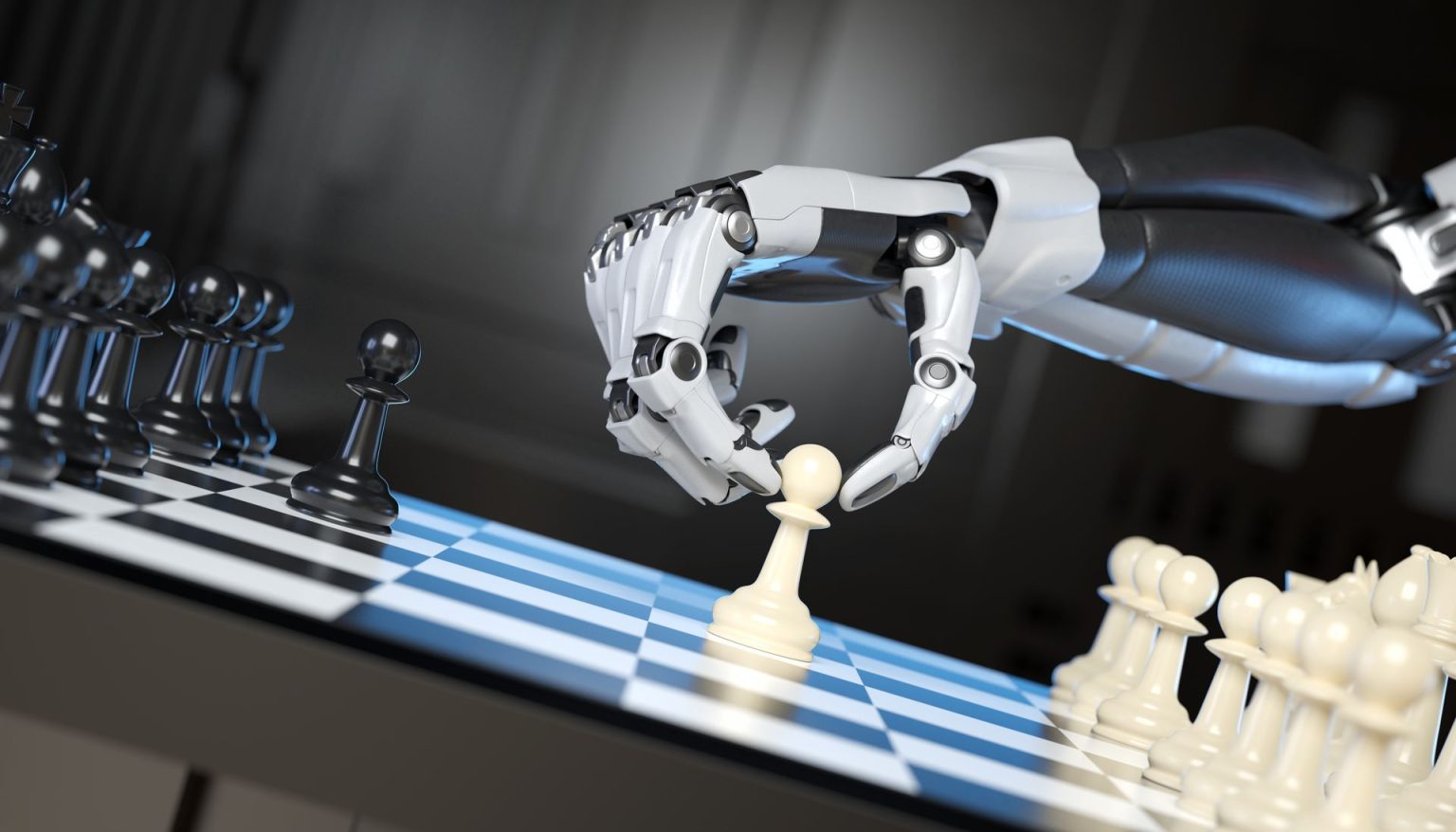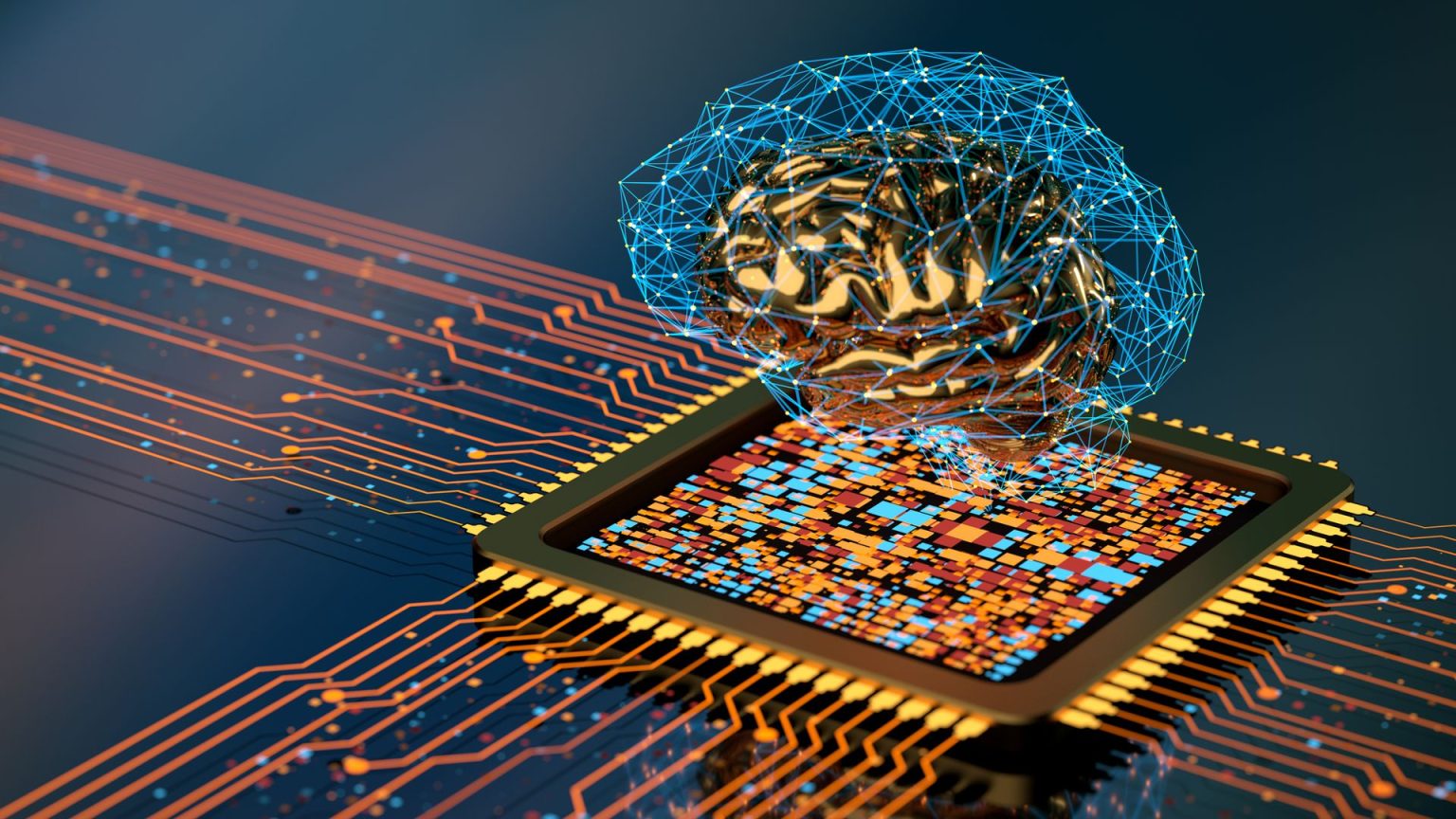摘要: This article will explore the main concepts revolving around artificial intelligence and the answers to frequently asked questions without getting into technical complexities as much as possible.

▲圖片來源:dataconomy
Today, we look at the basics of artificial intelligence, which permeates almost every aspect of our lives. This article will explore the main concepts revolving around artificial intelligence and the answers to frequently asked questions without getting into technical complexities as much as possible.
WHAT IS ARTIFICIAL INTELLIGENCE?

▲The basics of artificial intelligence: AI currently exists as Artificial Narrow Intelligence (ANI)(來源:dataconomy)
Artificial intelligence (AI) is a field of computer science that focuses on developing smart machines capable of accomplishing tasks that require human intellect.
Most people immediately think of Artificial General Intelligence (AGI) when they hear about AI. It can perform anything that a human being can, but it does so far superior. However, the fact is that we are nowhere near to creating one. AI currently exists as Artificial Narrow Intelligence (ANI), which is very specialized. You can teach it a few things, and it will perfect them. However, give it another assignment, and it will ruin the job horribly.
TYPES OF AI: NARROW, GENERAL, AND SUPER AI EXPLAINED
When we talk about the basics of AI, we first need to look at the types that are in use and in still in theory. AI applications are generally divided into three categories based on their ability to accomplish activities. These sorts differ and represent a natural progression for AI systems today.
NARROW ARTIFICIAL INTELLIGENCE: RELIABLE MACHINES ON MISSIONS
Narrow AI is the most common type of AI today. Narrow AI is sweeping the world, from mobile phone apps to the Internet to big data analytics. The term originates from the fact that these artificial intelligence systems are designed for a specific purpose. They are also known as “weak” AI due to their restricted approach and inability to complete tasks other than those assigned to them. In conjunction with their limited capacity, this narrow focus makes them ‘weak’ AI.
Narrow AI is generally restricted in scope since it addresses a specific issue. Its architecture and operation are intended to guarantee that a task is completed, with its focus reflected in its design and functioning. Because of these limitations, narrow AI has laser-sharp attention to the specific goals for which it was designed.

▲The basics of artificial intelligence: Narrow AI is utilized in many online applications, including recommendation engines, spam filters, and expert systems(來源:dataconomy)
Narrow artificial intelligence is one of the most popular options for businesses because of its high performance, speed, and energy efficiency over humans. Narrow AI may use smart automation and integration to deliver efficiency while maintaining accuracy for a wide range of low-level activities.
Traditional relational database technology is unsuitable for such AI applications. With personal data collection becoming more common, businesses have a huge quantity of big data to train AI and get insights from it.
Today, narrow AI is utilized in many online applications, including recommendation engines, spam filters, and expert systems.
ARTIFICIAL GENERAL INTELLIGENCE: HUMAN-LIKE CONSCIOUSNESS AND ADAPTABILITY
The term narrow AI refers to where artificial intelligence is now, whereas general AI refers to where it will be in the future. General artificial intelligence, sometimes known as strong AI and artificial general intelligence (AGI), is a type of AI that can think and act like humans.
Perceptual abilities, such as vision and language processing, and cognitive skills like analysis, contextual comprehension, thinking, and a more all-encompassing way of thinking, in general, are included. Narrow AI is designed to do one thing and is limited in scope. General AI, on the other hand, can be wide and versatile. Adaptive general intelligence’s learning process must also be unsupervised instead of current narrow AI’s supervised and labeled learning.

▲The basics of artificial intelligence: The idea of general AI is still a long way from since the technologies necessary to create it do not exist yet(來源:dataconomy)
The idea of general AI is still a long way from since the technologies necessary to create it do not exist yet. Many people believe that neural networks are a good approach to build the groundwork for what might eventually be dubbed general artificial intelligence. However, the fact remains that human intellect is still an enigma.
While we are beginning to understand how our brains and minds function, we are still far from comprehending what “intelligence” means. In addition to this difficulty, defining “awareness” is necessary for generating a broad AI. This is because an AGI must be aware and not just a computer program or machine.
ARTIFICIAL SUPER INTELLIGENCE: THE FINAL FORM
Artificial super intelligence (ASI) is an AI that outperforms human intellect in every respect. This is one of the most general ideas about artificial intelligence, but it’s generally thought of as the final stop on the road to creating an AI.
Artificial superintelligence is still a theoretical technology, but many scenarios have already been conceived. Many experts believe that ASI will emerge from the exponential rise in AI algorithms, the Intelligence Explosion.

▲The basics of artificial intelligence: Artificial superintelligence (ASI) is an theorical AI concept that outperforms human intellect in every respect(來源:dataconomy)
The term “intelligence explosion” refers to the occurrence of an intelligence explosion, which is required for the development of artificial superintelligence. It’s a sort of explosion in terms of intellect: from human-level, general artificial intelligence to an unimaginable degree. This happens through recursive self-improvement.
The ability to learn from user interaction in neural networks is a kind of self-improvement in AI. On the other hand, recursive self-improvement entails an AI system’s capacity to learn from itself and improve at an exponential rate of intellect.
To put it another way, suppose we made an AGI that worked at the level of average human intellect. It will learn from itself to reach superhuman intelligence by employing the cognitive abilities of a normal human. This, however, soon escalates as the AI’s knowledge is deepened. The next learning will be completed at a genius level of cognitive function. Intelligence is then refined, resulting in a smarter intelligence than itself at each stage. Intelligence builds up quickly until a super-intellect emerges when it reaches its limit.
THEORY OF MIND
The Theory of Mind concept is based on the psychological theory that other living creatures have thoughts and emotions, impacting one’s behavior. This would imply that AI machines may comprehend how people, animals, and other machinery feel and act through self-reflection and will make decisions as a result of this understanding to make their own. To establish two-way communication between people and artificial intelligence, machines must be able to comprehend and process the concept of the “mind” and various other psychological ideas in real time.

▲The basics of artificial intelligence: The ultimate stage for artificial intelligence will be when it becomes self-aware(來源:dataconomy)
SELF-AWARENESS
The ability to grasp others’ mental states and predict their behavior without relying on language or prior knowledge is important in AI development. The ultimate stage for artificial intelligence will be when it becomes self-aware.
This form of artificial intelligence has human-level consciousness and understands its existence in the world, as well as other people’s emotions. It would be able to decipher what others require based on what they tell it and how they say it. South Park’s take on the future Alexa is fun yet spot-on description for this. For artificial intelligence to develop consciousness, human researchers must first grasp the concept of consciousness and then figure out how to replicate it so that it may be built into machines.
AI AND MACHINE LEARNING
Some technologies play such critical roles in the development of artificial intelligence that it would be absurd to consider them separately from the basics of artificial intelligence. But don’t be intimidated. We still stay true to our word at the beginning of the article and continue to examine the basics of artificial intelligence in plain language whenever possible.
Narrow AI is often based on a specific AI approach known as machine learning. Machine learning is only one form of AI, and it’s rather simpler to describe when compared to other computer applications. In a regular computer program, you construct a set of rules, usually made up of if/then statements and conditions. In reality, most computer programs, video games, and applications work this way. Because a sequence of requirements was satisfied, an outcome is produced. On the other hand, machine learning uses data to learn from examples rather than rules.

▲The basics of artificial intelligence: Machine learning uses data to learn from examples rather than rules(來源:dataconomy)
Let’s say you want your program to identify a handwritten number. You’d write an algorithm in a normal program that examines the image pixel by pixel, determining whether it is light or dark, and then trying to come up with all of the various ways people could ever write a three in this grid. The number of possibilities is infinite,
You start with real data to achieve this with machine learning. You show the program thousands of examples of the numbers in handwriting. You also provide the algorithm, known as a learner, with negative instances, so it understands what not to pursue. The tool learns how to identify and gets better at identifying things as it receives more experience. Your team does not need to build the learner or algorithms to get started with machine learning. Cloud service providers such as Microsoft Azure, Amazon Web Services, and Google Cloud offer these tools. In reality, the barrier to entry is quite low, and all your company has to do is provide some data.
DEEP LEARNING AND NATURAL LANGUAGE PROCESSING
Deep learning is a kind of machine learning that builds on the idea that our brains have many neurons and synaptic connections, with neurons with multiple connections to other neurons. It’s an exaggeration to say these algorithms mimic the brain. It’s more accurate to call it inspired by a portion of it since our brain has billions of neurons and synapses connected.
An artificial neural network is a collection of many layers of mathematical probability. It, too, necessitates big data examples to teach. Deep learning is frequently utilized in speech recognition and language comprehension.

▲The basics of artificial intelligence: Natural language processing, or NLP, uses deep learning to understand and respond to natural language(來源:dataconomy)
Natural language processing, or NLP, uses deep learning to understand and respond to natural language. You probably have a voice-activated helper in your house or pocket already. Consider how useful you find your Alexa, Google Home, or Siri. These technologies are quite amazing. Because one can ask a question in a million different ways, they don’t concentrate on the sentence itself. Rather, they’re taught to focus on the meanings of words. Was it a question? An order? They also know how to rank terms and subjects and other aspects of language to get the best result possible.
“NLP appears to be a niche technology that powers home gadgets,” you might be thinking. Its application is more extensive than that. NLP is becoming increasingly important in customer service as well as marketing. For example, sentiment analysis is the study of sentiments, also known as emotions. It examines written text (support tickets, comments, reviews, social media posts) to see whether it’s positive, neutral, or negative.
Another example is chatbots, which may be utilized in various ways. Chatbots used to operate just like an algorithm several years ago. They were designed with rule-based parameters and could only handle a small number of consumer queries. Fast forward to today, and chatbots appear quite different. They’re capable of conversations as well as more complicated requests.
轉貼自Source: dataconomy.com
若喜歡本文,請關注我們的臉書 Please Like our Facebook Page: Big Data In Finance


留下你的回應
以訪客張貼回應